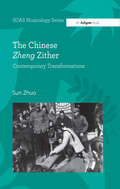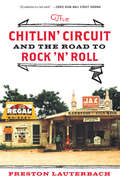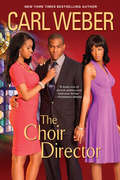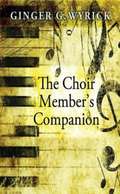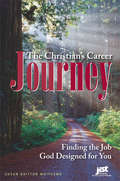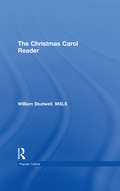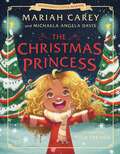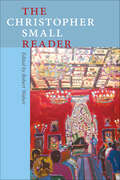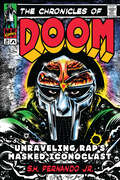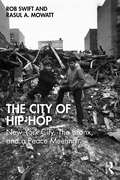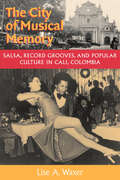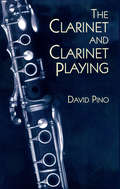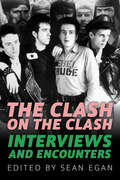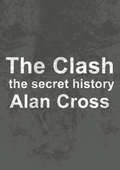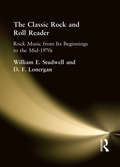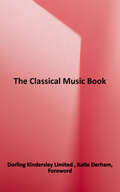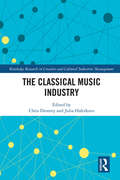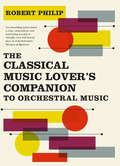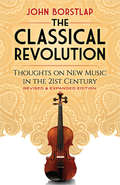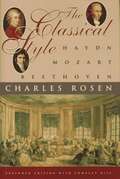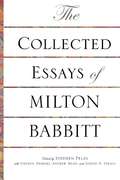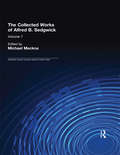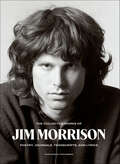- Table View
- List View
The Chinese Zheng Zither: Contemporary Transformations (SOAS Musicology Series)
by Sun ZhuoThe zheng zither is one of the most popular instruments in contemporary China. It is commonly regarded as a solo instrument with a continuous tradition dating back to ancient times. But in fact, much of its contemporary solo repertory is derived from several different regional folk ensemble repertories of the mid-twentieth century. Since the setting up of China’s modern conservatories, the zheng has been transformed within these new contexts of professional music-making. Over the course of the twentieth century, these regional folk repertories were brought into the performance traditions of modern regional zheng schools. From this basis, a large new zheng repertory was created by conservatory musicians, combining aspects of Western classical music with folk music materials. With the ’opening up’ of China’s economy since the 1980s, the zheng has been brought into the wider stage of international music-making which includes contemporary art music compositions by overseas based Chinese composers and commercial world music works by Western composers. Through a series of case studies, this book explores how the transformation of the Chinese zheng has constantly responded to its changing social context, critiquing the long-standing arguments concerning ’authenticity’ in the development of tradition. This work arises out of, and reflects on, the research methodologies known as performance as research. As an insider to the tradition, brought up within China’s zheng society, a trained and practising zheng performer, this study is largely drawn from the author's own experiences of practising and performing the music in question; her study also draws on fieldwork, as well as primary and secondary written sources in Chinese and English. This book is accompanied by a DVD which contains audio visual materials relating to the author's fieldwork and zheng performances by different zheng musicians.
The Chitlin' Circuit: And the Road to Rock 'n' Roll
by Preston Lauterbach"Lauterbach's tribute . . . is welcome and overdue." --Jonathan Yardley, Washington Post For generations, "chitlin' circuit" has meant second tier--brash performers in raucous nightspots far from the big-city limelight. Now, music journalist Preston Lauterbach combines terrific firsthand reportage with deep historical research to offer a groundbreaking account of the birth of rock 'n' roll in black America.
The Choir Director
by Carl WeberNew York Times bestselling author Carl Weber takes readers back to church, where preaching isn't always enough, nothing goes better with the Word than a song--and it's time for some hard-earned lessons in love, brotherhood, and betrayal. Bishop T. K. Wilson has done all he can to make First Jamaica Ministries a success. But with his last choir director getting caught in a scandal, attendance and cash flow are down. To fill the pews and collection plates, Bishop is counting on a new choir director, the charismatic Aaron Mackie, to revive the church. Aaron has been waiting his entire life to prove he has what it takes to be a big-time choir director. But his ways around women, past and present, could cost him more than his job. Simone Wilcox is smart, sexy--and a highly respected church trustee. She's got her eye on the new choir director, with the intention of having a lot more on him, and no one is getting in her way. First Lady Monique Wilson does and says what she wants, regardless of church politics. Despite her shortcomings and a past rumored to include a long list of men, she'll do just about anything to protect the Bishop. You'd think the Bishop was being tested enough, with choir in-fighting, romantic jealousies, and personal vendettas. But a final piece of the puzzle has yet to be revealed: Someone has been robbing the church blind. Someone whose connection to the Bishop is far too close for comfort. . . . Praise For The Church SeriesUp To No GoodThis page-turning drama keeps readers in suspense until the very last page. --Upscale MagazineThe First LadyWeber gives us a front-row pew seat to all the action going down. . . --Essence®So You Call Yourself A ManA delightful and entertaining book. --Black Issues Book ReviewThe Preacher's SonWeber spins a lively, revelation-packed tale deepened by genuine emotion, convincing detail and smart dialogue. --Publishers Weekly
The Choir Member's Companion
by Ginger G. WyrickThe Choir Member's Companion is designed for use by individual choir members in a local church adult choir. The book is intended for choir members to better understand musical symbols, terminology, and symbols used in choral music. CONTENTS: 1. Introduction to Choir Membership 2. Basic Music Reading Skills 3. Musical Road Map 4. Basic Vocal Techniques 5. Sight-reading New Music 6. How to Mark Your Music 7. Preparation for Worship 8. Preparation for Other Performances 9. Glossary of Musical Terms and Symbols
The Christian's Career Journey
by Susan Britton WhitcombWhether you want to work in the private sector or public sector, business or industry, corporate America or mom-and-pop shop, nonprofit or ministry organization, this book will unveil the deeper significance and purpose God has for your career.
The Christmas Carol Reader
by Frank Hoffmann William E Studwell B Lee CooperLike that Biblical, astronomical star of Bethlehem, The Christmas Carol Reader guides readers on their quest for information about Christmas songs. Studwell gathers a composite picture of the world's most important and famous carols and includes an ample selection of lesser-known Christmas songs. All of the carols are presented in their historical and cultural contexts which adds to readers’understanding and appreciation of the songs.As the only book that covers this elusive topic, The Christmas Carol Reader informs and entertains readers on over 200 songs of all types (sacred and secular), of all periods (Middle Ages through the 20th century), and from a number of countries and cultures. Because many of the songs in The Christmas Carol Reader fit into more than one distinct category, Studwell wisely divides the songs into two major groups--those that reflect Christmas as a Holy Day and those that celebrate Christmas as a Holiday. Here is just a sample of the breadth of coverage of songs:Sacred: From Heaven Above to Earth I Come; O Come, O Come Emmanuel; Angels From the Realms of Glory; As With Gladness Men of Old; O Holy Night (Cantique de Noël); Thou Didst Leave Thy ThroneSecular: Happy Holiday; A Holly Jolly Christmas; God Rest You Merry, Gentlemen; Silver Bells; Here Comes Santa Claus; I'll Be Home for ChristmasMedieval: Puer Natus in Bethlehem (A Boy Is Born in Bethlehem); Coventry Carol; I Sing of a Maiden; La marche des rois (The March of the Kings); In Dulci Jubilo1500--1700's: Bring a Torch, Jeanette, Isabella; I Saw Three Ships; Carol of the Bagpipers1800's: Adeste Fideles (O Come All Ye Faithful); O Little Town of Bethlehem; What Child Is This?; It Came Upon a Midnight Clear; Stille Nacht, Heiliege Nacht (Silent Night)Spirituals: Go Tell It on the Mountain; I Wonder as I Wander; Mary Had a Baby; Rise Up, Shepherd, and FollowLittle Known: O Bethlehem!; The Sleep of the Infant Jesus; Song of the Nuns of ChesterCountries and Cultures: O Tannenbaum; Lulajze Jezuniu (Polish Lullaby); Fum, Fum, Fum; Carol of the Bells; Patapan; El rorro (The Babe)As readers learn about the history and nature of the Christmas carol in general and the specific history of individual religious and secular carols, they will learn some history and nature of the holiday season which can bring more enjoyment into their celebrations for years to come.On long winter nights, The Christmas Carol Reader can be read continuously as a series of fact-based commentaries on Christmas music. For shorter periods in between holiday activities, readers can peruse one of the topical sections or select, with the aid of the title index, an individual essay of interest. As a library reference, this book can provide facts for research on Christmas songs or just provide an entertaining education for curious library patrons.
The Christmas Princess
by Mariah Carey Michaela Angela DavisThe Christmas Princess is an unforgettable holiday classic tale, told by Mariah Carey herself alongside Michaela Angela Davis and featuring beautiful illustrations by Fuuji Takashi.The Queen of Christmas introduces . . . Little Mariah!There was one time unlike any other,when everyone pitched in and helped one another . . .CHRISTMAS TIME!Mariah Carey, adored by fans around the world, has brought forth a unique, heartwarming, and modern fairy tale with The Christmas Princess, starring Little Mariah! Like her record-breaking, globally adored song “All I Want for Christmas Is You,” this story is an instant and inclusive family holiday classic. While firmly placed in the tradition of Christmas storytelling, The Christmas Princess is infused with her one-of-a-kind festive Mariah magic and musicality.Little Mariah doesn’t have much and doesn’t want a lot, but there is just one thing she longs for: a peaceful and joyous holiday season. Feeling outcast and alone, Little Mariah sets off on a wintry, wondrous journey, ultimately discovering the healing power of her voice to spread the spirit of Christmas at home and all around the world.
The Christopher Small Reader (Music/culture Ser.)
by Christopher SmallThe Christopher Small Reader is the fourth and final book in Christopher Small's legacy as a composer, pianist, teacher, friend, provocateur, and influential outsider in classical music studies. It is at once a compendium of, a complement to, and an important addition to Small's prior books: Musicking; Music, Society, Education; and Music of the Common Tongue. The Christopher Small Reader brings previously published work, some of it available in disparate locations, together with key excerpts from his three books, and other writings that remained unpublished at his passing in 2011, making available ideas that were not included in the earlier books and presenting an overview of his thought over the course of his life. The collection is a fitting capstone, providing rich insights into Small's understanding of musicking as a crucial way of relating to the world.Hardcover is un-jacketed.
The Chronicles of DOOM: Unraveling Rap's Masked Iconoclast
by S.H. FernandoThe definitive biography of MF DOOM, charting the reclusive and revered hip-hop artist&’s life, career, and eventual immortality."Fernando provides a comprehensive look at DOOM's life and career, meticulously researched through interviews with the rapper&’s many collaborators and those closest to the man behind the mask. His track-by-track breakdowns of DOOM's albums will have sample spotters diving into their record collections. A perfect pairing with Dan Charnas's Dilla Time (2022), this is an essential exploration into the world of 'your favorite rapper&’s favorite rapper.'" —Carlos Orellana, Booklist (starred review) On December 31, 2020, the world was shocked to learn about the death of hip-hop legend MF DOOM. Born in London and raised in the suburban enclave of Long Beach, New York, Daniel Dumile Jr.'s love of cartoons and comic books would soon turn him into one of hip-hop's most enigmatic, prolific, and influential figures.Sweeping and definitive, The Chronicles of DOOM: Unraveling Rap&’s Masked Iconoclast recounts the rise, fall, redemption, and untimely demise of MF DOOM. Broken down into five sections: The Man, The Myth, The Mask, The Music, and The Legend, journalist S. H. Fernando, or SKIZ, chronicles the life of Daniel Dumile Jr., beginning in the house he grew up in in Long Beach, NY, into the hip-hop group KMD, onto the stage of his first masked show, through the countless collabs, and across the many different cities Daniel called home. Centering the music, SKIZ deftly lays out the history of east-coast rap against DOOM's life story and dissects the personas, projects, tracks, and lyrics that led to his immortality.Including exclusive interviews with those who worked closely with DOOM and providing an unknown, intimate, behind the scenes look into DOOM&’s life, The Chronicles of DOOM is the definitive biography of MF DOOM, a supervillain on stage and hero to those who paid attention.
The Church Cantatas of J. S. Bach
by Alec RobertsonFor nearly every Sunday from 1723 to 1728, J S Bach composed and his young orphan boy-students performed, a half-hour cantata in the Lutheran church services of the Saint Thomas Church in Leipzig, Germany. A cantata usually began with a chorus, contained recitatives (narrative) and arias (meditations) and closed with a hymn (chorale). Bach's cantatas contain more than 1500 movements, filling 67 compact discs in today's recordings. They contain dozens of magnificent choruses and hundreds of deeply-felt and spectacular arias and chorales. Alec Robertson analyzes 173 of Bach's roughly 210 extant cantatas. He organizes them according to the Lutheran church year, starting with Advent and ending with the Reformation Festival of October 30. He introduces each Sunday and feast day with the Biblical citations which were usually the basis for the cantatas. He discusses each movement, even listing the instrumentation. Bach's cantatas are at the pinnacle of western classical music. Not only do they give spiritual nourishment to Christians and non-Christians but they are studied the world over by amateur and professional musicians for their penetrating pictorialization, harmonizations, counterpoint and beautiful melodies. They contain great choruses, arias for all types of singers, plus some duets and trios. Whether you are an amateur or serious musician, this book will help you to understand and appreciate these works. Cantatas not discussed in this book are those intended for special occasions such as weddings, funerals, birthdays of prominent persons, civic events such as town council inaugurations, those with secular themes and those originally included in the Bach canon but which modern scholarship has determined not to have been his compositions (de-established). Accordingly, the following cantatas are not discussed: 11, 15 (deest.), 29, 50, 53 (deest), 54, 71, 97, 106, 117, 118, 119, 120, 131, 141 (deest.), 142 (deest.), 150, 160 (deest.), 189 (deest.), 191, 192, 193, 195, 196, 197, 198 and 200-215. In this braille file, German words are shown using Braille grade 2 English contractions. If you download the DAISY file, you will get the German words uncontracted. Note: an excellent internet source for all things Bach cantatas is http://bach-cantatas.com/ .
The City of Hip-Hop: New York City, The Bronx, and a Peace Meeting
by Rob Swift Rasul A. MowattThe City of Hip-Hop positions a unique conceptualization of the history of Hip-Hop, that it was a combination of forces that produced the environment for Hip-Hop to specifically grow in the geographies of New York City and its boroughs. This book argues it was the political forces of the 1970s combined with the economic forces of free market capitalism and privatization of public services, neoliberalism, and the social forces of the deindustrialization of major cities and displacement of populations that led the cultural creation of the “Boogie Down” Bronx. The City of Hip-Hop shows how Hip-Hop is a socio-political reaction that created an alternate reality with a geographic specificity, and it is the interplay with those forces that nurtured it to become the culture force that we know it today in New York, Philadelphia, Boston, Los Angeles, Chicago, London, Manchester, Liverpool, Berlin, São Paulo, Tokyo, Washington D.C., Seattle, Paris, Houston, Dallas, Miami, Atlanta, Detroit, Toronto, Cleveland, Johannesburg, Barcelona, Belfast, Gaza City, and elsewhere. Once those of us as fans of the culture zoom out to see such a bigger picture, a much-needed criticism and retelling of the culture and art of Hip-Hop emerges as our understanding.This book is essential for preservers of the culture, students, scholars, and general readers interested in urban planning, urban design, urban geography, place-making, American Studies, Cultural Studies, Black Studies, and Latin American Studies.
The City of Musical Memory: Salsa, Record Grooves and Popular Culture in Cali, Colombia (Music Culture)
by Lise A. WaxerSalsa is a popular dance music developed by Puerto Ricans in New York City during the 1960s and 70s, based on Afro-Cuban forms. By the 1980s, the Colombian metropolis of Cali emerged on the global stage as an important center for salsa consumption and performance. Despite their geographic distance from the Caribbean and from Hispanic Caribbean migrants in New York City, Calenos (people from Cali) claim unity with Cubans, Puerto Ricans and New York Latinos by virtue of their having adopted salsa as their own. The City of Musical Memory explores this local adoption of salsa and its Afro-Caribbean antecedents in relation to national and regional musical styles, shedding light on salsa's spread to other Latin American cities. Cali's case disputes the prevalent academic notion that live music is more "real" or "authentic" than its recorded versions, since in this city salsa recordings were until recently much more important than musicians themselves, and continued to be influential in the live scene. This book makes valuable contributions to ongoing discussions about the place of technology in music culture and the complex negotiations of local and transnational cultural identities.
The Clarinet and Clarinet Playing
by David PinoOne of the most comprehensive available books on the subject features suggestions about technique, tonguing and articulation, musicianship, and musical interpretation. Includes guidelines for teaching, making your own reeds, and preparing for public performance, plus an intriguing look at clarinet history. "A godsend . . . far and away the most valuable guide ever printed for the self-taught player." -- The Clarinet, Journal of the International Clarinet Society. Appendixes. Includes 7 black-and-white illustrations.
The Clash on Clash: Interviews and Encounters
by Sean EganThe Clash thought they could change the world. They never did, but they created some of the greatest rock music of all time in the attempt.Clash interviews were mesmerizing. Infused with the messianic spirit of punk, the Clash engaged with the press like no rock group before or since, treating interviews almost as addresses to the nation. Their pronouncements were welcomed but were hardly uncritically reported. The Clash's back pages are voluminous, crackle with controversy, and constitute a snapshot of a uniquely thoughtful and fractious period in modern history. Included in this compendium are the Clash's encounters with the most brilliant music writers of their time, including Lester Bangs, Nick Kent, Mikal Gilmore, Chris Salewicz, Charles Shaar Murray, Mick Farren, Kris Needs, and Lenny Kaye.Whether it be their audience with the (mainly) simpatico likes of punk fanzine Sniffin' Glue, their testy encounters with the correspondents of pious UK weeklies like New Musical Express, Melody Maker, and Sounds, or their friendlier but no less eyebrow-raising conversations with US periodicals like Creem and Rolling Stone, the Clash consistently created copy that lived up to their sobriquet "The Only Band That Matters."
The Clash: The Secret History (The\secret History Of Rock Ser.)
by Alan CrossAlan Cross is the preeminent chronicler of popular music.Here he provides a history of Joe Strummer, Mick Jones, and The Clash.This look at the band—"The Only Band That Matters"—is adapted from the audiobook of the same name.
The Classic Rock and Roll Reader: Rock Music from Its Beginnings to the Mid-1970s
by William E Studwell David LonerganThe Classic Rock and Roll Reader: Rock Music from Its Beginnings to the Mid-1970s is chock full of entertaining essays to inform and delight you about an era that shaped our culture and future musical trends. This unique book will surprise and enchant even the most zealous music buff with facts and information on the songs that reflected America’s spirit and captured a nation&’s attention. The Classic Rock and Roll Reader is offbeat, somewhat irreverent, ironic, and ancedotal as it discusses hundreds of rock and non-rock compositions included in rock history era. The songs offer you information on: Rock’s Not So Dull Predecessors (for example, “Bewitched, Bothered, and Bewildered” and “The Cry of the Wild Goose”) The Pioneering Rock Songs (such as “Rock Around the Clock” and “Shake, Rattle, and Roll” ) Older Style Songs Amidst the Rocks (for example, “I Could Have Danced All Night” and “Rocky Mountain High” ) The Megastars and Megagroups (such as “Blue Suede Shoes,” “Respect,” and “Surfin’USA” ) The Best Songs that Never Made No. 1 (for example,“ I Feel Good” and “ Tie a Yellow Ribbon Round the Ole Oak Tree” )The Classic Rock and Roll Reader: Rock Music from Its Beginnings to the Mid-1970s also examines the music which preceded early rock, the music which followed early rock, and the numerous non-rock songs which flourished during the classic rock period. A wide spectrum of music is discussed in well over 100 essays on various songs. Musicians, librarians, and the general audience will be taken back to the birth of rock and roll and the various contributing influences. Analyzing each song’s place in rock history and giving some background about the artists, The Classic Rock and Roll Reader offers even the most avid music enthusiast new and unique information in this thorough and interesting guide.
The Classical Music Book: Big Ideas Simply Explained (DK Big Ideas Ser.)
by Dorling Kindersley LimitedLearn about the world’s greatest classical compositions and musical traditions in The Classical Music Book. Part of the fascinating Big Ideas series, this book tackles tricky topics and themes in a simple and easy-to-follow format. Learn about Classic Music in this overview guide to the subject, great for novices looking to find out more and experts wishing to refresh their knowledge alike! The Classical Music Book brings a fresh and vibrant take on the topic through eye-catching graphics and diagrams to immerse yourself in. This captivating book will broaden your understanding of Classical Music, with: - More than 90 pieces of world-famous music - Packed with facts, charts, timelines and graphs to help explain core concepts - A visual approach to big subjects with striking illustrations and graphics throughout - Easy to follow text makes topics accessible for people at any level of understanding The Classical Music Book is a captivating introduction to music theory, crucial composers and the impact of seminal pieces, aimed at adults with an interest in the subject and students wanting to gain more of an overview. Here you’ll discover more than 90 works by famous composers from the early period to the modern day, through exciting text and bold graphics. Your Classical Music Questions, Simply Explained From Mozart to Mendelssohn, this fresh new guide goes beyond your typical music books, offering a comprehensive overview to classical music history and biography. If you thought it was difficult to learn about music theory, The Classical Music Book presents key information in an easy to follow layout. Explore the main ideas underpinning the world’s greatest compositions and musical traditions, and define their importance to the musical canon and into their wider social, cultural, and historical context. The Big Ideas Series With millions of copies sold worldwide, The Classical Music Book is part of the award-winning Big Ideas series from DK. The series uses striking graphics along with engaging writing, making big topics easy to understand.
The Classical Music Book: Big Ideas Simply Explained (DK Big Ideas)
by DKLearn about the world&’s greatest classical compositions and musical traditions in The Classical Music Book.Part of the fascinating Big Ideas series, this book tackles tricky topics and themes in a simple and easy to follow format. Learn about Classic Music in this overview guide to the subject, great for novices looking to find out more and experts wishing to refresh their knowledge alike! The Classical Music Book brings a fresh and vibrant take on the topic through eye-catching graphics and diagrams to immerse yourself in. This captivating book will broaden your understanding of Classical Music, with:- More than 90 pieces of world-famous music - Packed with facts, charts, timelines and graphs to help explain core concepts- A visual approach to big subjects with striking illustrations and graphics throughout- Easy to follow text makes topics accessible for people at any level of understandingThe Classical Music Book is a captivating introduction to music theory, crucial composers and the impact of seminal pieces, aimed at adults with an interest in the subject and students wanting to gain more of an overview. Here you&’ll discover more than 90 works by famous composers from the early period to the modern day, through exciting text and bold graphics.Your Classical Music Questions, Simply ExplainedFrom Mozart to Mendelssohn, this fresh new guide goes beyond your typical music books, offering a comprehensive overview to classical music history and biography. If you thought it was difficult to learn about music theory, The Classical Music Book presents key information in an easy to follow layout. Explore the main ideas underpinning the world&’s greatest compositions and musical traditions, and define their importance to the musical canon and into their wider social, cultural, and historical context.The Big Ideas SeriesWith millions of copies sold worldwide, The Classical Music Book is part of the award-winning Big Ideas series from DK. The series uses striking graphics along with engaging writing, making big topics easy to understand.
The Classical Music Industry (Routledge Research in Creative and Cultural Industries Management)
by Chris Dromey Julia HaferkornThis volume brings together academics, executives and practitioners to provide readers with an extensive and authoritative overview of the classical music industry. The central practices, theories and debates that empower and regulate the industry are explored through the lens of classical music-making, business, and associated spheres such as politics, education, media and copyright. The Classical Music Industry maps the industry’s key networks, principles and practices across such sectors as recording, live, management and marketing: essentially, how the cultural and economic practice of classical music is kept mobile and alive. The book examining pathways to professionalism, traditional and new forms of engagement, and the consequences of related issues—ethics, prestige, gender and class—for anyone aspiring to ‘make it’ in the industry today. This book examines a diverse and fast-changing sector that animates deep feelings. The Classical Music Industry acknowledges debates that have long encircled the sector but today have a fresh face, as the industry adjusts to the new economics of funding, policy-making and retail The first volume of its kind, The Classical Music Industry is a significant point of reference and piece of critical scholarship, written for the benefit of practitioners, music-lovers, students and scholars alike offering a balanced and rigorous account of the manifold ways in which the industry operates.
The Classical Music Lover's Companion to Orchestral Music
by Robert PhilipAn invaluable guide for lovers of classical music designed to enhance their enjoyment of the core orchestral repertoire from 1700 to 1950 Robert Philip, scholar, broadcaster, and musician, has compiled an essential handbook for lovers of classical music, designed to enhance their listening experience to the full. Covering four hundred works by sixty-eight composers from Corelli to Shostakovich, this engaging companion explores and unpacks the most frequently performed works, including symphonies, concertos, overtures, suites, and ballet scores. It offers intriguing details about each piece while avoiding technical terminology that might frustrate the non-specialist reader. Philip identifies key features in each work, as well as subtleties and surprises that await the attentive listener, and he includes enough background and biographical information to illuminate the composer’s intentions. Organized alphabetically from Bach to Webern, this compendium will be indispensable for classical music enthusiasts, whether in the concert hall or enjoying recordings at home.
The Classical Revolution: Thoughts on New Music in the 21st Century Revised and Expanded Edition
by John Borstlap"Rich in discussion-worthy arguments … an important contribution to musical aesthetics." — Die Tonkunst"An excellent and expansive view of where we now are in the larger world of contemporary art music." ― Academic QuestionsThese essays by a prominent composer offer a thought-provoking exploration of a current trend in classical music. Author John Borstlap advocates a departure from the atonal characteristics typical of modern music and a return to more traditional forms. He notes that new classical composers are increasingly successful in the central performance culture because they offer a fresh approach to the problems that persist in contemporary music, where an establishment with outdated ideas still dominates the production, reception, and funding of new music. Borstlap's treatise introduces new composers, reveals instances of institutional biases, and examines issues of cultural identity, musical meaning, and the aesthetics of beauty. In order to offer readers the most up-to-date insights, this edition of TheClassical Revolution has been newly revised and expanded by the author.
The Classical Style: Haydn, Mozart, Beethoven
by Charles RosenThis book treating the three most beloved composers of the Vienna School is considered basic to any study of classical-era music. Drawing on his rich experience and intimate familiarity with the works of these giants, Charles Rosen presents his keen insights in clear and persuasive language.<P><P> Winner of the National Book Award
The Collected Essays of Milton Babbitt
by Joseph N. Straus Andrew Mead Stephen Peles Milton Babbitt Stephen DembskiLike his compositions, Milton Babbitt's writings about music have exerted an extraordinary influence on postwar music and thinking about music. In essays and public addresses spanning fifty years, Babbitt has grappled profoundly with central questions in the composition and apprehension of music. These writings range from personal memoirs and critical reviews to closely reasoned metatheoretical speculations and technical exegesis. In the history of music theory, there has been only a small handful of figures who have produced work of comparable stature. Taken as a whole, Babbitt's writings are not only an invaluable testimony to his thinking--a priceless primary source for the intellectual and cultural history of the second half of the twentieth century--but also a remarkable achievement in their own right. Prior to this collection, Babbitt's writings were scattered through a wide variety of journals, books, and magazines--many hard to find and some unavailable--and often contained typographical errors and editorial corruptions of various kinds. This volume of almost fifty pieces gathers, corrects, and annotates virtually everything of significance that Babbitt has written. The result is complete, authoritative, and fully accessible--the definitive source of Babbitt's influential ideas.
The Collected Works of Alfred B. Sedgwick (Nineteenth-Century American Musical Theater Series #7)
by Michael MecknaFirst Published in 1994. This is volume 7 of a 16-volume series providing comprehensive set of works from a full century of musical theatre in the United States of America. The contents of this volume represent the most ubiquitous, yet probably the least well documented or described forms of musical theatre in the United States during the nineteenth century. Alfred B. Sedgwick, this volume's focus, was one of the most prolific published authors of playlets with music – especially popular with middle-class families whose ancestors had emigrated from the British Isles.
The Collected Works of Jim Morrison: Poetry, Journals, Transcripts, and Lyrics
by Jim MorrisonNEW YORK TIMES BESTSELLERThe definitive anthology of Jim Morrison's writings with rare photographs and numerous handwritten excerpts of unpublished and published poetry and lyrics from his 28 privately held notebooks.You can also hear Jim Morrison’s final poetry recording, now available for the first time, on the CD or digital audio edition of this book, at the Village Recorder in West Los Angeles on his twenty-seventh birthday, December 8, 1970. The audio book also includes performances by Patti Smith, Oliver Ray, Liz Phair, Tom Robbins, and others reading Morrison’s work. Created in collaboration with Jim Morrison’s estate and inspired by a posthumously discovered list entitled “Plan for Book,” The Collected Works of Jim Morrison is an almost 600-page anthology of the writings of the late poet and iconic Doors’ front man. This landmark publication is the definitive opus of Morrison’s creative output—and the book he intended to publish. Throughout, a compelling mix of 160 visual components accompanies the text, which includes numerous excerpts from his 28 privately held notebooks—all written in his own hand and published here for the first time—as well as an array of personal images and commentary on the work by Morrison himself. This oversized, beautifully produced collectible volume contains a wealth of new material—poetry, writings, lyrics, and audio transcripts of Morrison reading his work. Not only the most comprehensive book of Morrison’s work ever published, it is immersive, giving readers insight to the creative process of and offering access to the musings and observations of an artist whom the poet Michael McClure called “one of the finest, clearest spirits of our times.” This remarkable collector’s item includes: Foreword by Tom Robbins; introduction and notes by editor Frank Lisciandro that provide insight to the work; prologue by Anne Morrison ChewningPublished and unpublished work and a vast selection of notebook writings The transcript, the only photographs in existence, and production notes of Morrison’s last poetry recording on his twenty-seventh birthday The Paris notebook, possibly Morrison’s final journal, reproduced at full reading sizeExcerpts from notebooks kept during his 1970 Miami trialThe shooting script and gorgeous color stills from the never-released film HWYComplete published and unpublished song lyrics accompanied by numerous drafts in Morrison’s handEpilogue: “As I Look Back”: a compelling autobiography in poem form Family photographs as well as images of Morrison during his years as a performer
